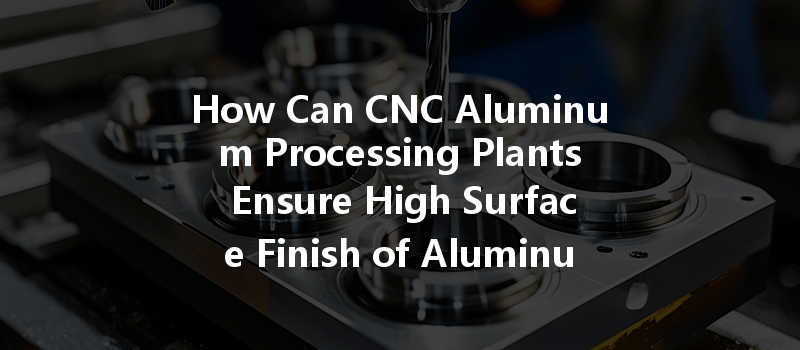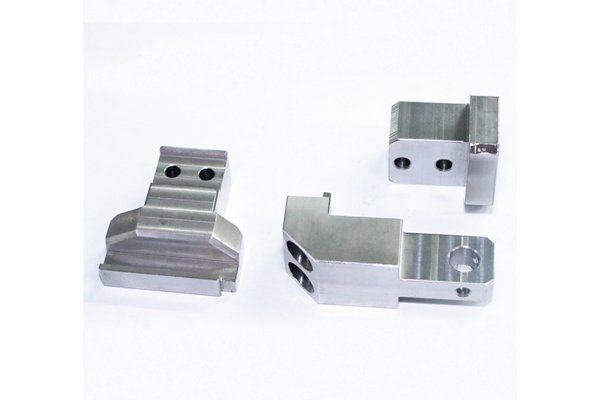Did you know that the global market for CNC machining is projected to reach over $100 billion by 2025? As the demand for high-quality components in industries including aerospace, automotive, and electronics continues to rise, the surface finish of aluminum parts produced through CNC (Computer Numerical Control) machining has become a critical factor in ensuring product performance, durability, and aesthetics.
Aluminum, known for its lightweight and corrosion-resistant properties, is widely used in manufacturing components. However, obtaining a high surface finish through CNC machining is often a challenge that can impact the functionality and overall quality of aluminum parts. In this comprehensive blog, we will explore the various techniques, best practices, and processes involved in achieving a superior surface finish on CNC-machined aluminum parts.
Before diving into the solutions for achieving a high surface finish, it’s essential to understand what surface finish entails. The surface finish is a term that describes the texture, smoothness, and appearance of a material’s surface. It affects not only the aesthetic appeal of the component but also its functional properties, such as wear resistance, fatigue strength, and the efficacy of coatings or treatments applied later.
Surface finish is quantified using different parameters, including:
Achieving a high surface finish in CNC machining involves several interrelated factors, each of which can significantly impact the outcome. Here are some crucial aspects to consider:
2.
The choice of cutting tools is paramount to achieving a superior surface finish. Tools made of high-speed steel (HSS), carbide, or ceramic materials can impact the quality of the finish. For aluminum machining, tools with sharp cutting edges and appropriate geometries are vital as they minimize material deformation and burr formation.
2.
Optimizing the cutting speed (RPM), feed rate, and depth of cut is essential for achieving a high-quality surface finish. Each of these parameters must be carefully adjusted based on the material characteristics and the type of operation being performed.
2.
The intrinsic properties of the aluminum alloy being machined also influence surface finish. Alloys such as 6061 and 7075 have different machinability characteristics, affecting the ease of achieving smoother surfaces during machining.
To ensure high surface finish quality, specific machining strategies can be employed. These approaches can be categorized into traditional machining techniques and advanced methods.
3.

3.
Even after machining, additional processes can further enhance the surface finish and quality of aluminum parts.
4.
4.
Implementing a robust quality control process is critical. Employing tools such as laser scanners, roughness testers, and coordinate measuring machines (CMMs) can help ensure that surface finish specifications are met.
One of the key elements to achieving high surface finish results is the skill and expertise of the machinists. Investing in continuous training allows operators to familiarize themselves with the latest technologies, machine operations, and techniques, ultimately leading to better finish quality.
5.
Utilizing virtual reality or simulation tools can help operators practice and refine their skills in a low-risk environment, allowing for experimentation without compromising actual production.
Implementing the strategies discussed can lead to improved surface finish quality, which in turn enhances the overall cost-effectiveness of CNC machining. While advanced technologies may require higher upfront investments, the long-term savings derived from reduced rework, increased customer satisfaction, and lower operational costs significantly outweigh these initial expenditures.
Achieving a high surface finish on CNC-machined aluminum parts is a multifaceted challenge that requires careful consideration of various factors, techniques, and post-processing methods. By focusing on tool selection, cutting parameters, machining techniques, finishing processes, and ongoing training for operators, CNC aluminum processing plants can ensure outstanding surface quality while maintaining efficiency and reducing costs.
This blog underscores the importance of surface finishing in CNC machining and why organizations must prioritize these practices to meet customer expectations and industry standards. As the market for CNC machining continues to grow, ensuring high-quality surface finishes will be central to remaining competitive and successful. By applying the strategies outlined, machining facilities can not only improve the appearance and performance of their products but also bolster their reputation in an increasingly demanding marketplace.
In a world where quality is paramount, leading the charge in achieving superior surface finishes will yield substantial returns and significantly impact the perception of your brand. So, embrace these techniques and watch as your machining capabilities soar to new heights!






